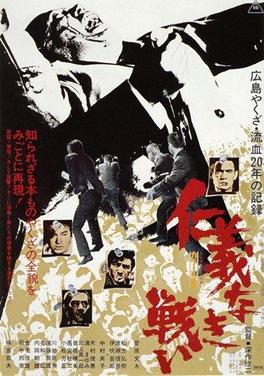Toho and Toei barely manage to stay in business. Toho has a few large films as The Makioka Sisters and Station, and restarts its Godzilla franchise in the middle of the decade. It also brings out popular anime for children, as the Doraemon series. Toho and Toei also switch to the system of advance tickets (like Kadokawa), to be bought up by related companies, so that they are assured of good ticket sales (even when the films are rubbish).
Toei looses most of its yakuza and other violent films to direct-to-video productions, but manages to launch one new successful series, The Yakuza Wives. It also makes several large-scale heroic films and nostalgic war films, as The Imperial Navy and The Great Japanese Empire (often brought out in August around the day WWII ended), keeping to masculine genres as of old.
Shochiku continues its dependence on the Tora-san films by Yamada Yoji, as in the previous decade; a new series is Tsuribaka Nisshi ("Fishing Fool's Diary"), based on a popular fishing manga, which starts in 1988 and will run to 20 films. Yamada Yoji is also here involved as screenwriter; the popular star of the series is Nishida Toshiyuki. The films were usually shown on a double bill with Tora-san.
Nikkatsu, finally, is hard hit because in the mid-eighties the VCR eliminates its booming "pink eiga" business. It makes its last Roman Porno films in 1988 and fails to restart a new identity with mainstream films. Still, Nikkatsu was the only studio to nurture new directors, who later went mainstream: Kurosawa Kiyoshi, Suo Masayuki, Zeze Takahisa, Nakahara Shun, Ishii Takashi and Morita Yoshimitsu, to name a few.
Violent gangster movies and sex films, the bread-and-butter of the seventies, are the first to move to the video racks (direct-to-video).
Beginning in the late seventies, ATG changes direction. From its initial emphasis on artistic and "difficult" films, it starts promoting young directors who rather make youth films or pure entertainment, although there are still great films in its line-up as Morita Yoshimitsu's The Family Game. But the company gets weaker as more and more of its cinemas close. Its production dwindles from 1985 on and the last film it supports is Shindo Kaneto's The Strange Tale of Oyuki in 1992. While it lasted, its influence on Japanese cinema in difficult years for the industry, was enormously positive.
Kadokawa, finally, continues producing its media mix films at the pace of several a year, but with the one exception of Fall Guy by Fukasaku Kinji, none is of any artistic value.
The disintegration of the studio system also gives chances to outsiders. Companies that never had anything to do with film, now enter the world of cinema. We have already seen the example of Kadokawa Shoten and its blockbuster strategy, assisted my massive advertising. In the eighties other newcomers are advertising agencies, trading companies, TV stations including cable TV companies, etc. Thanks to video tapes and later DVDs, films are not restricted to the theater, but can be (re-)sold also in other forms - including pay channels on cable television.
The large cinemas where the "program pictures" were shown close their doors and are refashioned into "mini theaters" with only 200 seats. Cinema complexes with a number of screens start being built, a trend that will only get stronger in the following decade. Especially in Tokyo, small and specialized theaters proliferate.
But there is little renewal and the best films are made by the "old guard," such as Kurosawa Akira (who makes his first film in five years), Suzuki Seijun who makes a comeback with independent productions, Yoshida Yoshishige who breaks a long silence and Imamura Shohei who wins the Palme d'Or in Cannes. These are all excellent films, but that many of the best films of the eighties were made by directors who flourished in the sixties also shows the decline of Japanese cinema in this decade.
New directors of this decade are most notably actor Itami Juzo, who achieves critical success with his first films, as well as Somai Shinji with his youth films and Japan's foremost animator Miyazaki Hayao. Others who should be mentioned are Yanagimachi Mitsuo, Omori Kazuki, Negishi Kichitaro and Morita Yoshimitsu.
Animation films increase in quality and popularity. Every summer and winter new anime feature films are released. In 1985 Studio Ghibli is set up, which in the next two decades will produce more than half of the 15 highest-grossing anime films ever made in Japan, all of high artistic quality.
Finally, after the almost exclusively masculine and therefore violent late sixties and seventies in Japanese film, in the eighties more films are again made for women and also families.
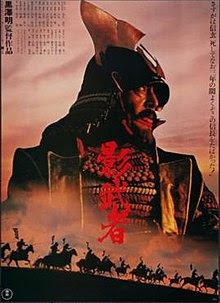
1980
January – The Hayakawa wire bridge in Saito, Miyazaki, collapses, leading to seven deaths.
January - Paul McCartney is arrested at Narita airport for possession of drugs.
August - Due to a rock fall at Mt Fuji, 12 climbers die.
August - A gas explosion in the underground shopping area of Shizuoka Station, causes 200 fatalities.
November - A fire at the Kawaji Prince Hotel in Fujihara, Tochigi, kills 40.
This year, there are 2,364 screens in Japan and total number of 320 films is produced (55% of total), for an audience of 164,422,000.
Kinema Junpo Award: Vengeance is Mine (Imamura)
Japan Academy Film Prize for Picture of the Year: Zigeunerweisen (Suzuki)
Deaths in the film world:
Higashiyama Chieko (89), actress, who appeared in famous films by Mizoguchi, Kurosawa and Ozu; she is perhaps best remembered for her role of Tomi, the wife of the aging couple on a visit to their children in Ozu's Tokyo Story.
Inagaki Hiroshi (74), director, best remembered for the Academy Award-winning Samurai I: Musashi Miyamoto, which was released in 1954, as well as Rickshaw Man which won the Golden Lion in 1958.
Arashi Kanjiro (77), actor, who in the 1950s portrayed Emperor Meiji in several hit films and also appeared in yakuza films in the 1960s.
(April)
Suzuki Seijun directs Zigeunerweisen, based on a novel by Uchida Hyakken. It takes its title from a gramophone recording of Pablo de Sarasate's violin composition, Zigeunerweisen, which features prominently in the film. Free from the cumbersome plots of his genre films, Suzuki puts his bizarre and brilliant visual language wholly in the service of an artistic film. Set in 1920s Japan, this surrealistic psychological drama will become the first part of Suzuki's "Taisho Roman Trilogy" (with Kagero-za, 1981, and Yumeji, 1991). With Otani Naoko, Harada Yoshio and Fujita Toshiya. All three films were produced by Arato Genjiro. When exhibitors declined to screen the film, Arato screened it himself in an inflatable, mobile tent in Tokyo to great success. Kinema Junpo Award for Best Film of the Year and Japan Academy Prize for Picture of the Year. Zigeunerweisen also won Honorable Mention at the 31st Berlin International Film Festival. (Cinema Placet)
(April)
Kurosawa Akira directs Kagemusha (lit. "The Shadow Warrior"), an elegiac epic with grand medieval battles. For ten years Kurosawa had not been able to make a film in Japan, and now this was only made possible thanks to the financial support of two of his longtime admirers, American directors Francis Ford Coppola and George Lucas. Kurosawa examines the concept of the double as a means to explore the slipperiness of identity, an old Kurosawa theme. He also delves into philosophical issues of power, leadership and the play between illusion and reality. Nakadai Tatsuya plays both the warlord Takeda Shingen, and the thief who is hired to impersonate him after Shingen's sudden death (which is kept secret). A great historical epic, that however compared with Kurosawa's earlier films strikes the viewer as a bit static and monumental. Won the Palme d'Or at the 1980 Cannes Film Festival. Nominated for the Academy Award for Best Foreign Language Film. (Kurosawa Production Co. / Twentieth Century Fox / Toho)
(May)
Day of Resurrection aka Virus (Fukkatsu no hi) by Fukasaku Kinji. After a US military-engineered virus, released during a plane crash, kills almost the entire human population, survivors (scientists and military personnel) in Antarctica desperately try to find a cure and save the human race. This post-apocalyptic science fiction film, based on a novel by Komatsu Sakyo, starred an international ensemble cast which included Sonny Chiba and George Kennedy. On its release, the film was the most expensive Japanese film ever made. Cannes Film Market. (Kadokawa)
(November)
"Disciples of Hippocrates" (Hipokuratesu-tachi) by Omori Kazuki is a semi-autobiographical rumination on the rigors of medical school - the director himself (born in 1952) had studied medicine in Kyoto. The film conveys a real sense of student life. Omori would make more youth films and love stories and become a commercial director in the nineties, when he worked regularly for Toho. (ATG)
(December)
Ichikawa Kon dramatizes alienation in his adaptation of Kawabata's Koto (lit. "The Old Capital"), where long-separated twin sisters meet again, only to face estrangement. The movie was the last in which actress Yamaguchi Momoe appeared before she retired to marry her co-star, Miura Tomokazu. (Horikaku Production Company)
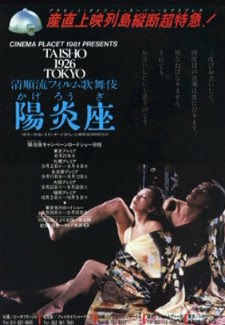
1981
January to March - A very cold winter with massive snowfall and avalanches causes 152 fatalities.
October - Gas explosions at a coal mine in Hokutan, Yubari, Hokkaido cause 93 fatalities.
Kinema Junpo Award: Zigeunerweisen (Suzuki)
Japan Academy Film Prize for Picture of the Year: Station (Furuhata)
Deaths in the film world:
Kimura Isao (58), actor, known for such roles as Yusa, the criminal, in Stray Dog and the youngest of the samurai in Seven Samurai.
Ito Daisuke (82), film director and screenwriter, who played a central role in the development of modern jidaigeki.
(January)
"Muddy River" (Doro no Kawa) by Oguri Kohei is a film about childhood friendship and premature awakening to adult realities, set in postwar Osaka. The somber film, with its focus on working class characters, pits the cruelty of the adult world against the purity of the young. It is about the age-old paradox between innocence and experience. Oguri Kohei (born in 1945) has created a small but fine oeuvre in a personal style. Kinema Junpo Award for Best Film of the Year. (Kimura productions)
(March)
Eijanaika (lit. "Why Not") is the first period film of Imamura Shohei, set in the cataclysmic last years of the shogunate. A big, sprawling film in which the director juggles various complex plots about forms of civil disobedience. "Eejanaika" was a real historical movement, a series of carnivalesque religious celebrations which were meant as social and political protests, occurring for about a year from June 1867 in various parts of Japan. A large set of the Ryogoku Bridge and adjoining fairgrounds was created for the film which seems to burst with energy. Screened at the 1981 Cannes Film Festival. (Imamura Productions)
(August)
Kageroza (lit. "Heat-Haze Theater") by Suzuki Seijun is a beautiful modern ghost story, based on a novella by Izumi Kyoka, and the second part of Suzuki's "Taisho Trilogy." The eccentric and nostalgic narrative is set in 1926 Tokyo, where a Shinpa playwright (Matsuda Yusaku) has a series of encounters with a strange woman (Okusu Michiyo), who seems to be the wife of his wealthy patron. She tells him that her soul is encapsulated in the fruit of the Chinese Lantern Plant (hozuki). Intrigued, as the mysterious woman resembles his past lover, the playwright follows her to rural Kanazawa, where his patron wants to draw him into a love-suicide with her. The story is complicated by the appearance of another woman (Kusuda Eriko), the first, German wife of his patron, who however wears dark lenses and colors her hair to appear Japanese - but the problem is that she is supposedly dead. The climax of the film is formed by a sequence in a kabuki theater where child performers enact the relation between both women. Not for nothing did Suzuki himself call this work "cinematic Kabuki." With Zigeunerweisen, one of the best films of the decade. (Cinema Placet)
(October)
"Distant Thunder" (Enrai) by Negishi Kichitaro is about a young farmer (Nagashima Toshiyuki) who bravely persists despite the decline of agriculture in industrialized Japan, trying to come to terms with urban encroachment on his fields. Negishi Kichitaro (born in 1950) initially worked for Nikkatsu on Roman Porno, after which he got the chance to go mainstream via ATG with the present film. His films are characterized by subtlety and intelligence, and it is regrettable that he is unknown outside Japan. (ATG / New Century productions)
(November)
Station (Eki) is a typical vehicle for Takakura Ken, directed by Furuhata Yasuo. Takakura plays to type as Mikami, the laconic brooder who suffers various tragedies with manly stoicism. Previously, as a policeman training to be a sharpshooter for the Olympic Games, he has divorced his wife after discovering she had an affair. His coach is gunned down by a fleeing criminal. Now, many years later, Mikami returns to his snowy hometown and starts an affair with a middle-aged bar owner. Will he find peace? (Toho)
(December)
Sailor Suit and Machine Gun (Sera-fuku to kikanju) by Somai Shinji is a satirical take on yakuza films, starring Japanese idol Yakushimaru Hiroko and based on the novel of the same name by Akagawa Jiro. The storyline involves a teenage delinquent schoolgirl named Hoshi Izumi who inherits her father's yakuza clan. The title is a reference to a scene where the main character shoots several rival gang members with a submachine gun, while wearing the traditional Japanese school uniform. (Toei)
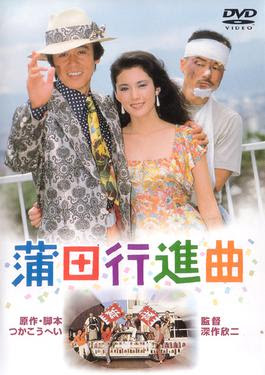
1982
January - A fishing boat sinks due to a strom in the Bering Sea, with 32 fatalities. February - A fire at the Hotel New Japan in Tokyo causes 33 fatalities.
February - Japan Airlines Flight 350 crashes in Tokyo Bay, killing 24 on board.
April - The 500 yen coin is introduced.
July - Torrential rains and landslides cause 326 fatalities in Kyushu.
August - A large typhoon causes 95 fatalities.
Kinema Junpo Award: Muddy River (Oguri)
Japan Academy Film Prize for Picture of the Year: Fall Guy (Fukasaku)
Deaths in the film world:
Kinugasa Teisuke (86), director, who won the 1954 Palme d'or at Cannes for Jigokumon (The Gate of Hell).
Shimura Takashi of Ikiru fame at the age of 76. His effects were presented to the Film Centre of the National Museum of Modern Art, Tokyo.
Saburi Shin (73), actor, noted for his leading roles in films by Ozu as Brothers and Sisters of the Toda Family (1941), Tea Over Rice (1952), Equinox Flower (1958) and Late Autumn (1960).
(February)
"Farewell to the Land" (Saraba itoshiki daichi) by Yanagimachi Mitsuo shows the alienation of the modern Japanese from nature and culture, and the disintegration of traditional rural family structures. After two brothers die in a boating accident, the father descends into infidelity, drug addiction and violence. Entered into the 32nd Berlin International Film Festival. (Atelier Dancan / Gunro)
(March)
"Burst City" (Bakuretsu toshi) by "cyberpunk pioneer" Ishii Sogo is a brash film set in a sort of post-apocalyptic future, where groups of punkers and biker gangs battle each other and also protest together against the building of a massive power plant. High on energy, but style wins out over content. Ishii Sogo (born in 1957) is an experimental and innovative director who has also made many shorts and music videos. (Dynamite Production)
Soho Ishii
(April)
In "I Are You, You Am Me" (Tenkosei) by cult director Obayashi Nobuhiko two students, a boy and a girl, come to inhabit each other's bodies through some sort of supernatural intervention. A timid girl becomes an effeminate and insecure boy, and a rascal becomes a loud and self-righteous girl. Both protagonists are splendid in their cross-gendered impersonations. A hilarious coming-of-age comedy. (ATG / Nippon Television Network)
(October)
"Fall Guy" (Kamata Koshinkyoku, lit. "Kamata March") by Fukasaku Kinji, with Matsuzaka Keiko. The only artistic film to come out of Kadokawa is a satire on the film industry. It is about a stuntman (the "fall guy," played by Hirata Mitsuru) and his arrogant movie star friend (Kazama Morio), who are engaged in the production of a samurai film at the Toei lot in Kyoto (the title ironically refers to "Kamata," where the studios of Shochiku were once located - the "Kamata March" was their theme song). Like other films by Fukasaku, it is ultimately a film about an honest man working for an undeserving boss. Kinema Junpo Award for Best Film of the Year and Japan Academy Prize for Picture of the Year. (Kadokawa Haruki Jimusho)
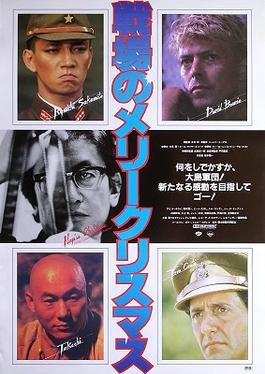
1983
February - A hotel fire in Zao Spa, Yamagata, causes 11 fatalities.
March - An avalanche causes 13 fatalities in Chino, Nagano.
April - Tokyo Disneyland opens.
May - The 7.8 Mw Sea of Japan Earthquake and Tsunami cause 104 fatalities.
July - Torrential rains and landslides cause 117 fatalities in Shimane.
September - Korean Air Lines Flight 007 is shot down by the Soviet Union after deviating from its route and entering prohibited airspace. 269 fatalities.
October - Ex-Prime Minister Tanaka Kakuei found guilty of accepting $2 million bribe from Lockheed Corporation, receives 4-year jail sentence.
November - Ronald Reagan first US President to address Diet.
Kinema Junpo Award: Fall Guy (Fukasaku)
Japan Academy Film Prize for Picture of the Year: The Ballad of Narayama (Imamura)
Deaths in the film world:
Terayama Shuji (47), avant-garde poet, dramatist, writer, film director, and photographer, who had an enormous influence on various Japanese filmmakers from the 1970s onward. The most famous of his eight feature films is Death in the Country (1974).
Nakamura Ganjiro (81), actor, who starred in Ozu's The End of Summer as well as Floating Weeds, and also in Ichikawa's Odd Obsession.
Kataoka Chiezo (80), actor, famous for his many roles in period films, as Bloody Spear at Mount Fuji (1955).
(April)
"The Ballad of Narayama" (Narayamabushi-ko) by Imamura Shohei is the second adaptation of the novel by Fukazawa Shichiro, about life in a mountain village where the aged are taken to Mt Narayama to die. The first adaptation was made in the fifties by Kinoshita. In comparison to Kinoshita's highly stylized "Kabuki-like" version, Imamura is down to earth naturalistic and also cranks up the sex content. Many critics seem to have a slight preference for Kinoshita's adaptation. With Ogata Ken as the unwilling son and Sakamoto Sumiko as the elderly mother who swiftly makes her preparations for the journey to the mountain. Japan Academy Prize for Picture of the Year and Palme d'Or winner at Cannes. (Toei)
(May)
"Merry Christmas, Mr Lawrence" (Senjo no Merii Kurisumasu) by Oshima Nagisa, based on stories about his experiences as Japanese prisoner of war during WWII by South-African author Laurens van der Post. The foreign financed film has an interesting actor line-up in rock star David Bowie, Japanese musician Sakamoto Ryuichi (who also wrote the score) and - in a first film role - Kitano Takeshi. Explores one of Oshima's constant themes: how social constructions (such as in this case, an army) are undermined by love (here between Bowie's and Sakamoto's characters). Entered into the 1983 Cannes Film Festival. (Recorded Picture Company (RPC) / National Film Trustees / Oshima Productions)
(May)
"The Makioka Sisters" (Sasameyuki) by Ichikawa Kon is a gorgeous kimono show (not surprisingly one of the sponsors of the film was a kimono company), interspersed with cherry blossom shots and the like, but this eye-candy fails as a serious adaptation of the eponymous, complex masterwork by Tanizaki Junichiro. It is as if the director was obsessively searching for "Japaneseness," without being able to go any deeper than the surface. This story of the gentle decline of an old merchant family from Osaka, consisting of four sisters, was inspired by Tanizaki's life in Kobe in the late 1930s with his wife and her three sisters. The two eldest sisters are married, the third one is trying hard to find a partner (via a miai) and the fourth sister is running wild. In Ichikawa's film, this is played for comedy; another element added by Ichikawa is the secret attraction the husband of the second sister feels for the third sister. With Kishi Keiko, Yoshinaga Sayuri, Itami Juzo and Ishikawa Koji. (Toho)
(June)
"The Family Game" (Kazoku Gemu) by Morita Yoshimitsu is a black comedy about a middle class family where the father, mother and two sons are only in name family, without having any deeply felt ties. The home tutor who is hired to help the second son pass his exam for a prestigious high school provides the commitment and love that are lacking in the parents. Besides taking on the family and education, the film is also a satire of middle class life in a tiny apartment - to reach his room, the first son has to pass through that of his brother; when the parents want discuss something in private, they have to sit in their car; and all members of the family eat facing in the same direction, as would become normal in families where the TV was always on. The celebratory dinner after the son passes his exam ends in a slapstick food fight because the teacher is fed up with this small-minded family. With Matsuda Yusaku as the unorthodox teacher and Itami Juzo as the authoritarian but ineffectual father. Kinema Junpo Award for Best Film of the Year. (ATG)
Morita Yoshimitsu
(July)
Antarctica (Nankyoku monogatari) by Kurehara Kureyoshi and starring takakura Ken. The story is based on a 1958 ill-fated Japanese scientific expedition to the South Pole, and especially the relationship between the scientists and their loyal and hard-working Sakhalin huskies, particularly the lead dogs Taro and Jiro. It was a big hit and held Japan's box office record for until it was surpassed by Miyazaki Hayao's Princess Mononoke in 1997. The original electronic score was created by Greek composer Vangelis.
(Fuji Television Network, Gakken Co. Ltd., Kurahara Productions)
(July)
"Barefoot Gen" (Hadashi no Gen) is an anime film by Mori Masaru, loosely based on the manga series by Nakazawa Keiji. It depicts the nuclear bombing of Hiroshima from the point of view of a small boy. (Madhouse / Gen Productions)
(December)
Legend of the Eight Samurai (Satomi hakkenden) by Fukasaku Kinji is a historical martial arts fantasy adapted from Kamata Toshio's 1982 novel Shin Satomi Hakkenden, which in its turn was a loose reworking of the 19th c. epic serial novel Nanso Satomi Hakkenden by Bakin.
(Kadokawa Haruki Jimusho, Toei)
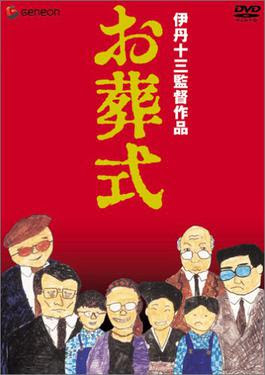
1984
January to March - Heavy snowfall causes 131 fatalities.
January - 83 are killed by an explosion at the Mitsui Miike coal mine in Omuta, Fukuoka.
May - Glico Morinaga case
(November)
"The Funeral" (Ososhiki) by Itami Juzo. With Miyamoto Nobuko and Yamazaki Tsutomu. When the wife's father suddenly dies, a couple is faced with the task to organize a funeral for the first time in their lives. Everything has to be done by the rule-book in Japan, but in the modern age the bereaved don't know anymore how to hold a proper traditional funeral, so they have to watch an instructional video to learn the etiquette. The three enervating days until the funeral are filmed in detail and with much humor and feeling. There are also farcical elements, such as the rapacious priest who arrives in a Rolls-Royce. Itami's first film and arguably his best. Kinema Junpo Award for Best Film of the Year and Japan Academy Prize for Picture of the Year. (Itami Productions / New Century Productions)
Hentai kazoku: aniki no yomesan ("Abnormal Family: Older Brother's Bride") by Suo Masayuki is a pink film and at the same time a spoof on Ozu - his camera style, his music, the way his characters talk (or rather, are silent), to even the signs of bars. The family consists of a father, two sons and a daughter. The eldest son marries and brings his buxom bride home, to engage in non-stop and rather loud sex. Father is silently in love with a bar hostess, the daughter starts working in a Soapland, and the younger son is confused by all the lust swirling around him. Further complications arise when the married son switches from his new bride to the father's bar hostess, with whom he engages in interesting SM sessions. (Kokuei Company)
Itami Juzo (1933-1997) was the son of pre-war satirical jidaigeki director Itami Mansaku and worked inititally as an actor (for example in Family Game) before taking place in the director's chair. He achieved international fame with Tampopo in 1985. His most characteristic vein was that of social satire (as in Taxing Woman), in which he lambasted the extravagances of the era of the bubble economy. His humor derived from incongruous situations and from the resourcefullness of his heroines in the face of adversity (usually played by his wife, Miyamoto Nobuko). In the 1990s, his work became rather formulaic, and although he tried to expand his range, he could not find a new path to creativity. He died by suicide in December, 1997.
(June)
"The Crazy family" (Gyakufunsha kazoku) by Ishii Sogo is an absurdistic comedy and black social satire about a family that moves to a new home in the suburbs, after which everyone falls prey to various comic obsessions. In the end, hostilities escalate and the new dreamhouse becomes a sadistic battlefield. The madness level is just too high for the film to be wholly effective. (ATG)
"Farewell to the Ark" (Saraba hakobune) is the last film by Terayama Shuji, who dies at age 47. It is a (very loose) transposition of the story of Garcia Marquez' novel A Hundred Years of Solitude to Okinawa. A surreal exploration of memory and a fascinating final film - just as though-provoking as the director's earlier Pastoral Hide and Seek. Entered into the 1985 Cannes Film Festival. (ATG)
"Typhoon Club" (Taifu kurabu) by Somai Shinji depicts the lives of a group of high-school students in a Tokyo suburb, who are temporarily marooned in the school's gymnasium because of a typhoon. Somai Shinji (1948-2001) was an independent director who made 10 films between 1980 and 2000, in which he often shows a compassionate understanding for alienation and loneliness. He was especially good at examining the awkward feelings of adolescents.
In the documentary film Antonio Gaudi Teshigahara Hiroshi visits the best known buildings of this Catalan architect and sculptor, including the famous Sagrada Familia Cathedral. With little narration, but music by Takemitsu Toru. (Teshigahara Productions)
Toho scores at the box office with its Godzilla revival (brought out at Godzilla's 30th anniversary), "The Return of Godzilla" (Gojira), the first of the "Heisei Godzilla" films. It is the 16th film in the total series, but as concerns plot brought out as a direct sequel to the 1954 original Gojira film. This revival returns to the darker themes and mood of some of the early films and brings on the original destructive monster. (Toho)
"Nausicaä of the Valley of the Winds" (Kaze no Tani no Naushika) by Miyazaki Hayao is an ecological anime feature based on an original manga story by the director. A young princess named Nausicaä, living in a near-feudal, post-apocalyptic world in which only small pockets of humanity survive, tries to understand nature, rather than destroy it. She is faced with a difficult choice when her world is invaded by enemies and her father killed: will she join the battle or seek for a peaceful solution? (Hakuhodo / Nibariki / Tokuma Shoten)
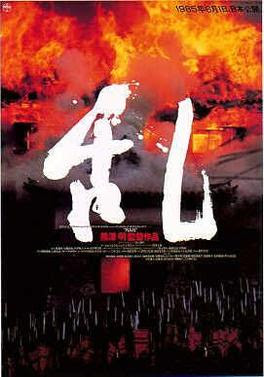
1985
This year, there are 2,137 screens in Japan. A total of 319 Japanese films is produced (50.9% of total films shown) and shown to an audience of 155,130,000.
Ran by Kurosawa Akira is a monumental film in which Shakespeare’s King Lear is transported to sixteenth-century Japan: an elderly lord (grandly played by Nakadai Tatsuya) abdicates to his three sons, two of whom then turn against him. The actor Peter (known from Funeral Parade of Roses) plays the transvestite fool and there is a Mahleresque score by Takemitsu Toru. Again a majestic and monumental film, showing the blight of greed and thirst for power, as well as the folly of war. Among the many awards won by Ran, Wada Emi won an Oscar for best costume design. (Greenwich Film Productions / Herald Ace / Nippon Herald Films)
Himatsuri ("Fire Festival") by Yanagimachi Mitsuo. Yanagimachi's critically acclaimed masterwork, based on a screenplay by Nakagami Kenji, is a modern cautionary fable with overtones of ancient Shinto, set in a picturesque fishing village in Kumano (southern Wakayama Prefecture) slated for corporate development. A macho lumberjack (Kitaoji Kinya), who hunts boars and monkeys with the young Ryota (Nakamoto Ryota), faces off with vengeful nature as well as with the fishermen of the village who suspect him of polluting the fish pens. A powerful film with a shocking conclusion - one of the best films made in the 1980s in Japan. Screened at the 1985 Cannes Film Festival; won various awards at international film festivals, such as Rotterdam and Locarno. (Cine Saison / Gunro / Seibu)
Sorekara ("And Then") by Morita Yoshimitsu is a bungei eiga based on a novel by Natsume Soseki. Daisuke (Matsuda Yusaku) is an aesthete who abhors the harsh, capitalistic atmosphere of the last years of the Meiji period. He lives a quiet life, without working, as his father, a rich businessman of samurai stock (Ryu Chishu), gives him an allowance. But Daisuke's life is thrown into turmoil when he meets his former sweetheart, Michiyo (Fujitani Miwako), again, whom he three years earlier had given in marriage to his best friend Hiraoka. His love is rekindled and he refuses a marriage proposal sponsored by his father, with disastrous results. A poetical film, that makes much of white lilies, the flowers with which Michiyo is associated. Kinema Junpo Award for Best Film of the Year. (Toei)
Tampopo (lit. "Dandelion") by Itami Juzo is a film for foodies: a "noodle Western." Miyamoto Nobuko plays a woman who wants to make a success of her ramen restaurant by creating the best ramen of Japan, and Yamazaki Tsutomu plays the trucker with cowboy hat who helps her by tasting. A very funny film, which also includes a biting satire of Japan's passion for the West, such as the scene in the Italian restaurant where a group of Japanese ladies tries to eat their pasta noiselessly, but after they hear a foreigner at the next table slurping, they start slurping away, too. (Itami Productions / New Century Productions)
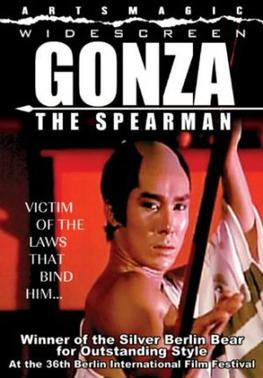
1986
Umi to dokuyaku ("The Sea and Poison") by Kumai Kei is based on a novel by Endo Shusaku about vivisection experiments on captured Americans undertaken by the Japanese Army with Kyushu University in the last days of the war - a historical fact. While Endo in his book took this as an opportunity to examine the national conscience and the Japanese perception of crime and punishment, Kumai has made a leftist political version, holding "the system" on both sides of the Atlantic responsible for this terrible train of events. Kinema Junpo Award for Best Film of the Year; also won the Jury Grand Prix at Berlin. (Nippon Herald)
Max, Mon Amour ("Max") by Oshima Nagisa is a deadpan comedy about a woman (Charlotte Rampling) who falls in love with a chimpanzee. The film was born out of Oshima's long admiration for Luis Buñuel and in fact written in collaboration with Buñuel's frequent screenwriter Jean-Claude Carriere. A wife's amorous attention to a large, affectionate chimp called Max infuriates her diplomat husband (Anthony Higgins) and sparks a delicious farce. Obsessing about their relationship, the husband invites the chimp into their home, but also peers through the keyhole to see what is happening between the two. Shows an unexpected side of Oshima, with as only possible criticism that his other films go much farther than this rather restrained comedy. All the same, this anarchistic subversion of bourgeois values deserves to be better known. (Serge Silberman / Greenwich Film Productions / Greenwich Films).
A-homansu is popular actor Matsuda Yusaku's only effort as director, but a singularly good one. It is a cyperpunk action movie in which he rejects the screen image of tough guy he had build up in the 1970s (and indeed, he would play very different and more difficult roles in his films of the eighties, such as the teacher in The Family Game). The actor Matsuda plays a lonely biker who helps a gang of punks led by Ishibashi Ryo against another gang. But director Matsuda consciously breaks all rules of the genre by ridiculing action hero cool and preventing the audience from sympathizing with the protagonist. The tough guy's "performance" is just "stupid," as also the title of the film indicates ("aho" means "stupid" in Kansai dialect, and "mansu" refers to "performance"). (Central Arts / Kitty Films)
Ningen no yakusoku ("A Promise") by Yoshida Yoshishige. After an old woman dies, her widower suffering from dementia confesses to having killed her. We then get the story in flashbacks. Screened at the 1986 Cannes Film Festival. (Kinema Tokyo Company Ltd. / Seibu Saison Group / Seiyu Company Ltd)
Gokudo no Onnatachi ("Gang Wives") by Gosha Hideo and with Iwashita Shima and Katase Rina. Based on a reportage by journalist Ieda Shoko, who demonstrated that the women in the yakuza world were strong personalities with nerves of steel. Iwashita Shima (the wife of director Shinoda Masahiro) was a golden choice for the gang-boss wife, cool and steely, but also elegant and stately. She rules the mob like a business imperium, but just in case also hides a gun under her kimono. This first film still has the feel of the reportage on which it was based, which adds to authenticity. In total ten installments would be made until 1997, when Iwashita bowed out, making it the only yakuza hit series of the decade. (Toei)
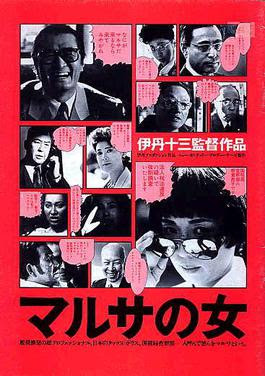
1987
Marusa no Onna ("A Taxing Woman") by Itami Juzo. After his two more artistic films, Itami now hits the jackpot with a light comedy in which his wife, the actress Miyamoto Nobuko, plays a plucky tax agent who goes after tax cheats, represented by tax evader king Yamazaki Tsutomu. Part 2 was made in 1988 and features a religious sect led by Mikuni Rentaro as holy tax evader. Besides the social satire, the films are interesting in presenting a strong, modern type of female lead. Unfortunately, the film's success meant that Itami would apply a similar formula to various other fields of activity, eventually leading to routine films with little innovation. But this funny first film deservedly received the Kinema Junpo Award for Best Film of the Year and Japan Academy Prize for Picture of the Year. (New Century Producers / Itami Productions)
Zegen by Imamura Shohei is a black comedy that takes up the theme from his documentary Karayuki-san and is set in the decades of Japan's colonial expansion in the first half of the 20th c. A Japanese businessman realizes that his country's armed forces will soon be advancing across Asia, and decides that they will require brothels, so he sets up shop in Southeast Asia. A very black satire, also criticizing Japan's (then seemingly boundless) economic expansion. With Ogata Ken and Baisho Mitsuko. Entered into the 1987 Cannes Film Festival. (Imamura productions)
Shinran: Shiroi michi ("Shinran: Path to Purity") by Mikuni Rentaro is the actor's only effort as director. It tells the story of one of Japan's major medieval Buddhist figures, the founder of the Jodo Shin sect of Pure Land Buddhism. Won the Jury Prize at the 1987 Cannes Film Festival. (Kinema Tokyo Company Ltd. / Nichiei)
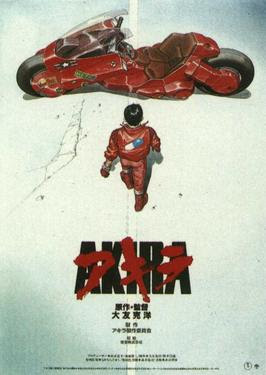
1988
Dogura Magura by Matsumoto Toshio is a comeback of this individualistic film maker with a surreal adaptation of the famous cult novel by Yumeno Kyusaku. A young man awakes in an insane asylum with no memory and a doctor tries to help him with the technique of "inherited memories." Although the film also contains a crime story, the main question it poses is the nature of reality. (Katsujindo Cinema / Toshykanky Kaihatsu AG)
Arashigaoka ("Onimaru") by Yoshida Yoshishige is a "Japanization" of the famous Emily Bronte novel. Set in the Muromachi-period and imbued with the mysterious atmosphere of the Noh theater. Matsuda Yusaku plays Onimaru, the character based on Heathcliff. With its hysterical atmosphere very different from the films Yoshida has made before. Entered into the 1988 Cannes Film Festival. (Mediactuel / Saison Group / Seiyu Production)
Tsuribaka Nisshi ("Fishing Fool's Diary") is a comedy film by Kuriyama Tomio, based on a fishing manga by Yamasaki Juzo and Kitami Kenichi. It is the first film in a series that would run to twenty installments until 2007. Most of the early films were released on a double bill with Otoko wa tsurai yo. The film focuses on salaryman Hamasaki Densuke ("Hama-chan," played by Nishida Toshiyuki), who is a typical irresponsible salaryman a la Ueki Hitoshi as his overriding passion is for fishing. His unlikely fishing mate is the CEO of the construction company where he works, Suzuki-san (Mikuni Rentaro), something that has to be kept hidden from colleagues on the workfloor. (Shochiku)
Bakayaro! Watashi Okottemasu ("Bakayaro! I'm Plenty Mad") is a four-part omnibus made by little-known young directors, such as Nakashima Tetsuya and Tsutsumi Yukihiko, and scripted by Morita Yoshimitsu. Shows several irritations which Japanese in the past would bear with patience, but which in the film lead to an anger explosion. Was popular enough to merit a second part the next year. (Kouwa International)
Hotaru no haka ("Grave of Fireflies") by Takahata Isao is an animated feature film based on an eponymous short story by Nosaka Akiyuki. Seita and his little sister Setsuko are left homeless by the firebombing of Kobe in 1945, which claims their mother's life. They can't find their father and finally move in with a shrewish aunt who constantly reminds Seita he is not doing enough for the war effort. Eventually, they leave and start living in an air-raid shelter in the countryside, begging and stealing food, but are unable to ward off starvation. (Shinchosha / Studio Ghibli)
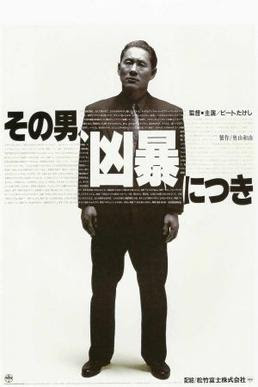
January: Emperor Hirohito dies; Prince Akihito becomes Emperor. Heisei era officially begins.
February: The Recruit scandal breaks, and the company's former president is arrested.
February: State funeral of Emperor Hirohito.
April: Japan introduces its first national consumption tax of three percent.
July: A large-scale landslide causes 15 fatalities in Fukui prefecture.
July: Miyazaki Tsutomu is arrested for abducting and murdering 4 young girls. Called "The Otaku Murderer", his killings caused a moral panic against otaku, accusing anime and horror films of making him a murderer. He was hanged in 2008.
In the 15th regular election for the House of Councillors, Liberal Democrats lose their majority for the first time in party history.
September: Yokohama Bay Bridge opens.
November: Sakamoto family murder - Aum Shinrikyo murders a lawyer who had been working on a lawsuit against the doomsday cult, together with his wife and infant son.
Matsuda Yusaku, the iconic actor of the seventies and eighties, who appeared in such artistic films as The Assassination of Ryoma, Heat-Haze Theater, The Family Game and And Then, dies at the young age of 39. His last film was Ridley Scott's Black Rain.
(February)
Katsu Shintaro climbs into the director's chair for a remake of Zatoichi ("Zatoichi: The Blind Swordsman"). Zatoichi takes action after he learns that his teacher has been murdered and the teacher's daughter forced into prostitution. More violence than in any previous Zatoichi film, but also something of a vanity piece for the 59-year old actor/director. Much is made good, however, by the presence of Ogata Ken as a sleepless, artistically inclined ronin. During the swordplay, a supporting actor was killed, something indicative of the low technical level cinematic swordplay in the eighties has sunk to. (Katsu Production)
My Rating: B
(May)
My Rating: A+
(July)
Tetsuo: The Iron Man by Tsukamoto Shinya is a true cult film of the "body horror" sort. The story of a man (Taguchi Tomorowo) who literally transforms into a "man of (scrap) iron," a metallic monster, after a hit-and-run incident. He first notices this while shaving, when his razor touches a metal screw in his cheek (Ouch!). Filmed with primitive special effects and shot with thousands of cuts in black and white with expressionistic lightning, and accompanied by a soundtrack full of experimental noise (by Ishikawa Chu). This ultra-violent and ultra-erotic fantasy is a singular cinematic experience, and also a piece of fetishism worthy of Cronenberg. Delivers a raw emotional punch. Took the grand prize at the Fantastic Film festival in Rome. (Japan Home Video (JHV) / K2 Spirit / Kaijyu Theater)
My Rating: B+
Filmmaker and actor Tsukamoto Shinya (1960) is best known for his body horror/cyberpunk film Tetsuo: The Iron Man (1989) and its sequels - he is often compared to David Cronenberg and David Lynch. His other films include Tokyo Fist (1995), Bullet Ballet (1998), A Snake of June (2002, his best film)), and Vital (2004). His films unfold in everyday surroundings made strange by weird camera angles or extreme close-ups. With Nightmare Detective (2006) Tsukamoto opted for a more commercial path, and since then his creativity has shrunk: with a film like Fires on the Plain (2014) he has entered the barren world of (unnecessary) remakes.
(July)
"Kiki's Delivery Service" (Majo no takkyubin) by Miyazaki Hayao is the story of a thirteen-year old witch who runs an air courier service on her broomstick. She is headstrong but also resourceful and in addition gets some help from a talking cat. Has been called one of the best children's films ever made. (Nibariki / Nippon Television Network (NTV) / Studio Ghibli)
My Rating: A+
(August)
My Rating: A
Kitano Takeshi (1947) is a popular Japanese comedian (stage name "Beat Takeshi"), television presenter, actor, and filmmaker. While in Japan primarily known as comedian and TV host, abroad he is famous for his work as a filmmaker. Takeshi played in several acting roles such as Merry Christmas, Mr. Lawrence (1983), where he became known for his cruel inexpressiveness. He made his directorial debut with 1989's Violent Cop and garnered international acclaim for Sonatine (1993) and HANA-BI, which won the Golden Lion in 1997. After these excellent films of New Wave of the 1990s, Kitano's work has been on a somewhat downward slope, and he did not completely fulfill his initial promise, but he did help re-restablish an international audience for Japanese film.
(September)
Rikyu by Teshigahara Hiroshi features Mikuni Rentaro in the title role of the famous tea master who is forced to commit suicide by Japan's ruler Hideyoshi (Yamazaki Tsutomu). A lush spectacle with beautiful costumes, but also a great statement of Teshigahara's aesthetics as head of the Sogetsu School of Ikebana. The film shows the clash between parvenu Hideyoshi with his golden tea house and flashy clothes and the austere tea master, who puts a single flower in a bare tea room, even cutting off all other flowers in the garden through which the guests have to pass. The film itself is a study of cultural pluralism, for it brings together ikebana, Noh and tea ceremony with Renaissance music, and examines the intercultural role of Portuguese traders and missionaries in late 16th c. Japan. Teshigahara was interested in the political function of art, and his implication in this last cinematic statement is that the aesthetic is always political - even in the case of something as abstract as the tea ceremony. (C. Ito and Company Ltd. / Shochiku / Teshigahara Productions)
My Rating: A+
[Reference works used: Currents In Japanese Cinema by Tadao Sato (Tokyo, 1987); The Japanese Film: Art and Industry by Joseph L. Anderson and Donald Richie (reprint Tokyo, 1983); A Hundred Years of Japanese Film by Donald Richie (Tokyo, 2001); Japanese Film Directors by Audrie Bock (Tokyo, 1985); A Critical Handbook of Japanese Film Directors by Alexander Jacoby (Berkeley, 2008); A New History of Japanese Cinema by Isolde Standish (New York, 2005); The Japanese Period Film by S.A. Thornton (Jefferson & London, 2008); Eros plus Massacre, An Introduction to the Japanese New Wave Cinema by David Desser (Bloomington and Indianopolis, 1988); Ozu and the Poetics of Cinema by David Bordwell (Princeton University Press: Princeton, 1988); Kurosawa: Film Studies and Japanese Cinema by Mitsuhiro Yoshimoto (Duke University Press: Durham, 2000); The Waves at Genji's Door by Joan Mellen (Pantheon Books: New York, 1976); Japanese Classical Theatre in Film by Keiko I. Macdonald (Fairleigh Dickinson University Press, 1994); From Book to Screen by Keiko I. Macdonald (M.E. Sharpe: New York and London, 2000); Reading a Japanese Film by Keiko I. Macdonald (University of Hawai'i Press: Honolulu, 2006); Behind the Pink Curtain, A Complete History of Japanese Sex Cinema, by Jasper Sharp (Fab Press: Godalming, 2008); Contemporary Japanese Film by Mark Schilling (Weatherhill: New York and Tokyo, 1999); The Midnight Eye Guide to New Japanese Film by Tom Mes and Jasper Sharp (Stone Bridge Press: Berkeley, 2005); Kitano Takeshi by Aaron Gerow (British Film Institute: London, 2007); Iron Man: the Cinema of Shinya Tsukamoto by Tom Mes (Fab Press: Godalming, 2005); Agitator: The Cinema of Takashi Miike by Jasper Sharp (Fab Press: Godalming, 2003); Nihon Eigashi by Sato Tadao (Iwanami Shoten: Tokyo, 2008, 4 vols.); Nihon Eigashi 110-nen by Yomota Inuhiko (Shueisha; Tokyo, 2014). All images are linked from Wikipedia.]
History of Japanese Film by Year





